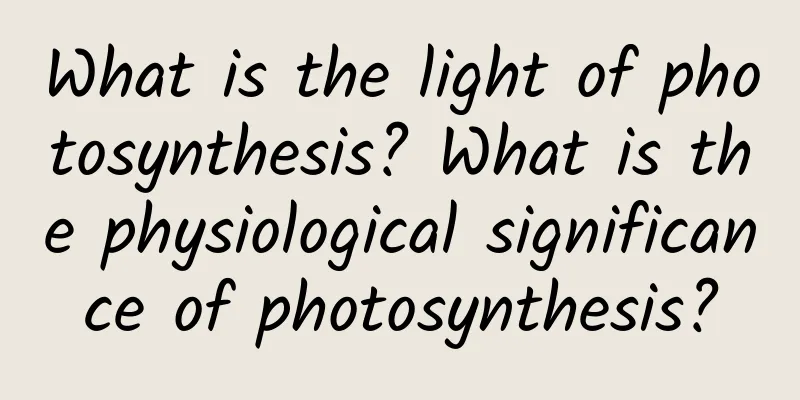What is the light of photosynthesis? What is the physiological significance of photosynthesis?

|
Photosynthesis converts light energy into electrical energy, electrical energy into active chemical energy, and active chemical energy is stored in organic matter to provide energy for plants themselves and other organisms in nature. Isn't that amazing? Encyclopedia Knowledge Network is here to test you today! Do you know what kind of light is photosynthetic? What is the physiological significance of photosynthesis? What are the energy changes and material changes in photosynthesis? The following article will give you a detailed introduction. Contents of this article 1. What is the light used for photosynthesis? 2. What is the physiological significance of photosynthesis? 3. Energy changes and material changes in photosynthesis 1What is the light of photosynthesis?Most lighting will work, fluorescent lamps are usually used. During photosynthesis, plants mainly absorb red-orange light and blue-violet light, which are also present in white light. 2What is the physiological significance of photosynthesis?1. Convert inorganic matter into organic matter. Provide organic matter for plants themselves and other organisms in nature. 2. Convert light energy into electrical energy, convert electrical energy into active chemical energy, and convert active chemical energy into organic matter for storage, thus providing energy for the plants themselves and other organisms in nature. 3. Absorb carbon dioxide and release oxygen, providing oxygen for the entire natural world and keeping the oxygen in the atmosphere in dynamic balance. 3Energy and material changes in photosynthesisThe energy change is: active chemical energy is converted into stable chemical energy and stored in formaldehyde. The material changes in the light reaction stage are: water is photolyzed into oxygen and reduced hydrogen, and ADP is added with phosphoric acid to generate ATP. Light energy is converted into active chemical energy and stored in ATP. The material changes in the dark reaction stage are: carbon dioxide is fixed into carbon 3 compounds, then reduced into formaldehyde compounds, and ATP is converted into ADP. |
<<: What are the benefits of photosynthesis? Where does photosynthesis take place?
>>: Why can't lutein photosynthesize? The nature of photosynthesis and respiration
Recommend
Is it normal to have abdominal pain after abortion?
There will be some subtle changes in our body and...
Female lumbar spine pain on both sides
Some women experience soreness and pain in the pe...
How many days after menstruation is a woman's safe period
Many women choose to have sex during the safe per...
What are the reactions to taking abortion pills?
In daily life, many women will experience unexpec...
Signs of early pregnancy in girls
As today's lifestyle becomes more and more di...
I got pregnant during my period.
If you find out you are pregnant during your peri...
How long does it take to detect pregnancy after missing menstruation?
It doesn't take long for a period to come bef...
“I fell down on the flat ground” What to do if you have sensory integration disorder?
There are generally two kinds of parents’ opinion...
How to treat endometrial polyps? Four common therapies
If you have endometrial polyps for a long time, y...
Winter height growth strategy! How can children eat to grow taller after the beginning of winter?
After the beginning of winter, the weather is get...
World Arthritis Day - Protect joint health and cherish your knees
October 12, 2024 is the 28th World Arthritis Day....
Can I eat peaches during my period?
Women's immunity is relatively low during men...
Kidney crisis in diabetic patients: how to avoid the 'sweet burden'?
In modern society, the incidence of diabetes is i...
What should girls do if their feet smell in summer?
Just imagine how embarrassing it would be if a gi...
Best time to conceive after menstruation
For women who want to have a baby after the end o...









